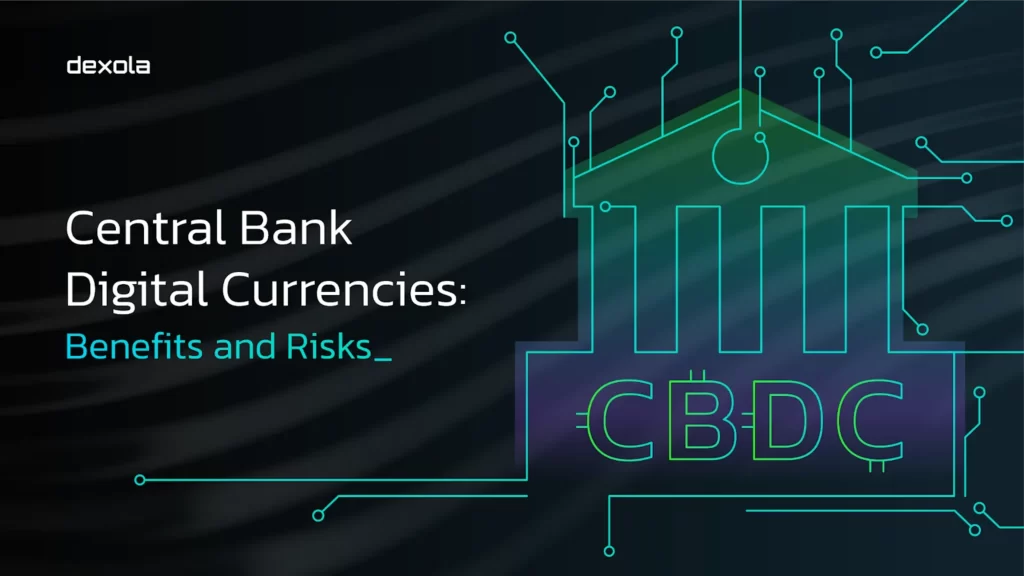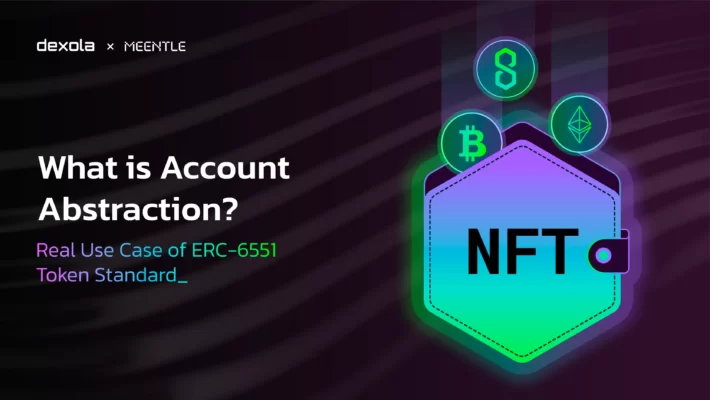Central Bank Digital Currencies (CBDC): Key Benefits and Risks

Central Bank Digital Currencies (CBDCs) have become a hot topic after cryptocurrencies have proven to be effective payment methods, and governments are looking to replicate their success in their macroeconomics strategies. Out of 195 countries in the world, 131 countries are researching, developing, or testing CBDC crypto.
At Dexola, we are closely tracking the global adoption of Central Bank Digital Currencies to understand their potential impact on the decentralized finance industry. Let’s unpack what CBDCs are all about: from their advantages and disadvantages to CBDC risks, their controversial qualities and political influence.
What Are CBDCs?
These days, there are three main forms of legal tender: physical cash, money in a bank account, and digital funds in services like PayPal.
One significant drawback of physical cash is its handling cost — it takes 5 cents to print a dollar bill. In 2022, the Fed printed 6.8 billion banknotes, costing $340 million.
Cashless money is also costly to handle. Most U.S. banks charge a $10 monthly maintenance fee for a bank account. Considering half of Americans have a bank account, the banks rake in $150 million in annual fees just for holding these cashless funds.
Digital money is much less expensive to manage, but it’s essentially backed by traditional fiat currency, thus combining the same fees. That’s one of the main benefits of CBDC.
The idea of the Central Bank Digital Currency is that instead of printing bills and giving them to banks and private digital money companies, the Central Bank would simply issue digital currency. It is cash, but digital. Not a representation of money, but money itself.
Why We Might Like CBDCs
Here are the key benefits of Central Bank Digital Currency:
1. CBDCs are cheap to operate. They are inspired by cryptocurrency design with a distributed ledger that stores all transactions and users’ balances. The cost-effectiveness features come from the automated clearance even with cross-border payments. With CBDCs, institutions can avoid the usual two-day settlement period for reconciling cash balances via credit and debit transactions.
2. CBDCs are inclusive. People who do not have physical access to the banking system might create a CBDC account, just like with bitcoin and other crypto.
3. CBDCs can be programmable, i.e. use smart contracts development just like crypto. This might bring us automated loans, currency exchanges, payment processing, investment, and other services with fewer fees and no human factor issues involved.
4. CBDCs can be used offline by signing transactions without internet access and broadcasting them later.
In total, CBDC benefits are that they might be cheaper and more convenient to use than the current cashless payments.
Why We Might Hate CBDCs
First, a blockchain may not even be involved; if it is, it will be a private network. There will be no transparency for regular users and no way to verify the source code. “Trustless” is not about CBDC crypto.
Second, any complex system like this is highly likely to contain a zero-day vulnerability. While in DeFi bugs lead to the loss of millions of dollars due to the limited liquidity, in a global system it might cause a loss of billions. Imagine the consequences of a nationwide hack.
Third, some of the 2.5 million people working in the banking sector might face job losses, as CBDCs technologies would require less manpower to manage.
Fourth, CBDC cryptocurrency will be fully centralized. Given government oversight, there’s the potential to simply erase someone’s funds, much like what we’ve seen happen in Canada.
The Controversies About CBDCs
CBDCs really might bring a better payment solution: cheaper, faster, and more inclusive. But the price is privacy. With banks, the government can track citizens’ transactions only if the banks allow it to, or report. With CBDCs the government will know everything about anyone, which can offset the central bank digital currency benefits.
The programmability can be used to build automated finance services but also to control people’s spending. For example, in Thailand, the Pheu Thai Party plans to gift 10,000 digital baht to each citizen, but with two conditions: the money will expire in 6 months and the receivers can spend it only within a 4 km radius of their homes. Similar restrictive approaches can be implemented to ban people from paying for goods and services.
Moreover, the introduction of CBDCs could shake up the financial elite. Private banks earn on leveraging people’s deposits, and if the Central Bank introduces a CBDC — a better payment solution — private banks might face problems and lose their revenue worth $14 billion a year in the US alone. That’s why banks are lobbying against the CBDC, and unlike government-controlled economies like China, the U.S. and Europe are not fast-tracking CBDC development.
The Florida governor, for example, banned any future CBDCs in the state.
Conclusion
Designing a CBDC will involve numerous trade-offs to meet the needs and concerns of governments, banks, businesses, and individuals. If it is cheaper to use, banks and intermediaries stand to lose revenue. If it invades privacy, people will not use it, and the government will lose power. If it gives too much privacy or is too costly to use, there is no point in developing such a system.
Hope that this overview of CBDC benefits and risks has helped you grasp the main principles.
Still haven’t got what is a CBDC in crypto? Interested in various types of CBDCs? Need examples of how to use CBDCs? Don’t hesitate to contact us for a consultancy.
In Dexola blog, you can read more about custom blockchain analytics tools and creating a crypto credit card system.


